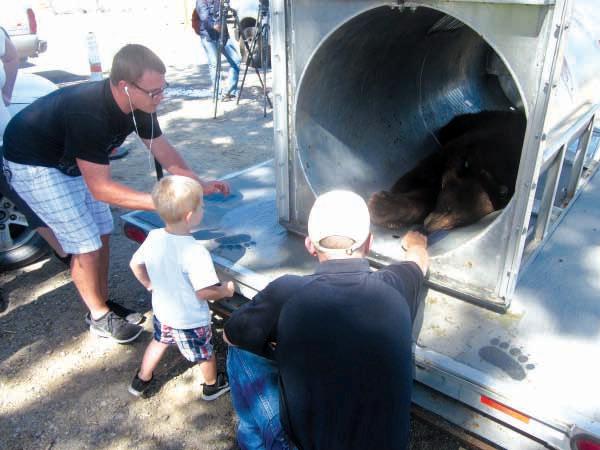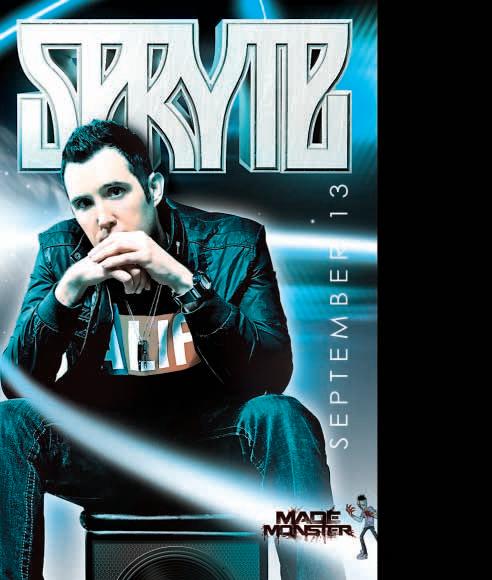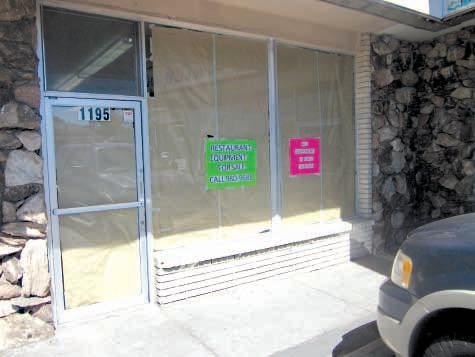
10 minute read
News
from Sept. 11, 2014
Nevada keeps high femicide rate
Nevada ranks sixth in the nation in the rate of women murdered by men. The state has placed in the top 10 of this list nine of the past 10 years. Last year was the one exception, when the state dropped to number 16. Using FBI figures, the Violence Policy Center found Nevada has a rate of 1.83 homicides of women per 100,000 population. The figures are for 2012, the most recent year for which the data is complete. The VPC said in part, “The overwhelming majority of these homicides were not related to any other felony crime, such as rape or robbery. Nationwide, for homicides in which the circumstances could be identified, 85 percent of the homicides were not related to the commission of another felony. Most often, females were killed by males in the course of an argument between the victim and the offender.”
Advertisement
“Reducing domestic violence homicide is the responsibility of all Nevada’s communities,” said Nevada Network Against Domestic Violence director Sue Meuschke. “As this report points out, women in Nevada are at a higher risk of being victims of homicide perpetrated by people they know and love. Much more must be done in our state to change this outcome beginning with common sense laws that keep firearms out of the hands of abusers. According to this report 70 percent of the domestic homicides committed in Nevada were committed with a firearm, much higher than the national average of 53 percent.”
In company with Nevada on this list are Alaska, South Carolina, Oklahoma, Louisiana, Mississippi, Missouri, Arizona, Georgia and Tennessee.
State Route Tesla planned
The Las Vegas Review-Journal this week reported that Gov. Brian Sandoval’s Tesla deal will cost $100 million more than previously announced. The RJ’s Sean Whaley reported that the state will drive a new highway through Storey County from Interstate 80 to Interstate 50 to accommodate Tesla’s transportation needs. It will go through some scenic areas that currently are accessible only to those who make an effort to get there.
Such a link has long been planned but was not envisioned anytime soon. Whaley reported that current estimates of cost for right of way are $43 million and for construction about $55 million.
Sick lake needs help
A public meeting on the future of Virginia Lake is planned at which city officials will brief the public on problems and the public can be heard.
The lake is suffering from toxicity caused by high nutrient enrichment and a lack of flows that cause “dead spots.” Cormorants and gulls are particularly suspected of fostering toxins because of their high fish diet, which reenters the lake as excrement.
Blue green algae, which creates toxins that are hazardous to birds, fish and mammals, is one result. In addition, it’s more than just the lake that is damaged. The watershed is also harmed by water that flows through the lake into Steamboat Creek, Boynton Slough and the Truckee River, picking up toxins on its way.
The lake was created by the New Deal’s Works Progress Administration in 1937. It was designed for swimming and wading with an average depth of five and a half feet. It covers 24.5 acres and is fed by the Cochran Ditch, which enters at the northwest corner. The Nevada Legislature passed control of the lake and other WPA projects to Washoe County in 1939. The lake is now managed by the city of Reno.
The meeting will be held at Thursday, Sept. 18, starting at 5:30 at Swill Coffee, 3366 Lakeside Drive.
—Dennis Myers
Three year old Bentley Papez gets a look at a tranquilized bear at the Nevada Wildlife Department. The boy stroked the bear’s brown fur, which is a bit coarse.
Number 26
Bears are getting ready for winter
An area behind the Nevada Department of Wildlife is filled with television by cameras. Two Karelian Bear dogs are Dennis Myers at parade rest. Wildlife employees mill around while television photographers try to get shots of a live bear through narrow grills on the side of a big steel can called a bear trap. On the can’s closed door is a sign: “KEEP OUT! DO NOT APPROACH/ DON’T WORRY … BEARS CAN’T READ.”
Chris Healy Wildlife Department spokesperson
Some of the wildlife folks have hats bearing the saying, “I’m Bear Aware. ARE YOU?” The side of a truck reads, below the NDOW door logo, “BEAR Logic. Think! like a bear.” On the back door is painted, “Visit our Karelian Bear dogs/ NDOW BEAR TEAM.”
And there is a warning to cars: “DO NOT PARK HERE/ BEAR TRAP PARKING ONLY/ VIOLATORS WILL SLEEP WITH THE FISHES.”
That’s wildlife humor.
It’s the bear’s third trip through the Wildlife Department. The previous two visits were not the bear’s idea. She was captured for research purposes, then later released. This time, she was captured because she apparently got so hungry that she came down out of the mountains looking for food and was captured at Lakeview, an affluent housing area on the south end of Washoe Valley, the north end of Carson City. She now bears a tag labeling her No. 26.
The wildlife folks explain that there are a couple of types of bears that are captured. One is like this one, wild bears who prefer to range through its large territory and stay away from humankind. The others are less attractively named garbage bears. They tend to stay in a small area that is near what is called the “urban interface”—the edges of a city or town.
Wild bears are like No. 26, about 150 pounds. Garbage bears are larger, 300 or more pounds. It’s the price they pay for eating human food and not getting much exercise, just like people.
The arrival of white humans in this region and the birth of mining were a disaster for bears. Before that time, black bears like this and some grizzlies wandered the area. (Basically, most non-grizzlies,whatever their color—and 26 is actually brown—are called black bears, to distinguish them from grizzlies, which are often called brown bears.)
But then the Comstock mines denuded Sierra slopes and the Lake Tahoe basin of timber to provide lumber for the square-set supports in mines, annihilating the bears’ habitat. The bears nearly disappeared from the region. And they mostly stayed away for a long time after return of new growth timber, until late in the 20th century. Interactions with humans started becoming a problem in the 1980s. By last year, a study in the Journal of Wildlife Management put the number of bears in Nevada at 400 to 700.
The returned bears sparked controversy, particularly when Nevada started allowing bear hunting in 2011.
“In my 25-plus years with the department, it was by far the most controversial decision we’ve been involved with,” said Wildlife Department spokesperson Chris Healy in 2011—this in a department that is constantly dogged by second-guessing from environmentalists on one hand and hunting/fishing folks on the other.
The human/bear contact problem has never gotten any easier, and Healy now says it has a lot more to do with the humans than the bears. Those humans have a responsibility, he said last week, to keep pet food inside, to harvest fruit. The bears really don’t want anything to do with humans, but the humans—often without knowing it—attract the bears.
“It’s really important for people to remember that they have the responsibility,” he said. “The animals are doing what their instincts tell them to do, and that’s go out and feed and do it as much as possible. For the human beings, they have the cognitive knowledge. They have the ability to think. So don’t attract animals with your activity.”
When humans put out pet food bowls, he said, they are also putting out wild animal bowls. When they put up bird feeders, they’re putting up bear feeders. And, “Just because you put up a dog door doesn’t mean that is the only animal that’s going to use it.” The wild bear at the Wildlife Department, remember, weighed only about 150 pounds.
Right now, unharvested fruit is a particular concern because bears are going after it. “If you don’t want to use the fruit, get it off the trees, and off the ground, and throw it away,” Healy said. He keeps talking about the need to think like a bear.
“You have a responsibility—a higher responsibility—if you live in those foothill areas to respect the wildlife, because you’re the one intruding into the habitat that they live in,” he said. “So if you don’t want bears, you don’t want other animals attracted to you, then don’t put out things that will attract them.”
Some humans go even further, knowingly attracting bears by feeding them. Wildlife officials have warned Lake Tahoe residents not to feed bears and prosecutors are now considering
PHOTO/DENNIS MYERS

charging one woman who was attacked and injured by a bear after she had fed bears for years.
Healy’s comment about bears feeding “as much as possible” refers to the fact that currently, bears are probably responding to hyperphagia— bulking up as much as possible for the winter ahead.
“We anticipate an increase in bear conflicts as the summer, fall progresses,” said game biologist Carl Lackay, who spends most of his time on bears. “This is the beginning of hyperphagia for bears. That’s the time when they’re really trying to eat as much as they can, taking in a high number of calories to put on a fat layer for the upcoming winter. We generally see a lot of bear activity in the urban wildland interfaces in September and October.”
The bear displayed for journalists last week was released back into the wild a day or two later. After her first couple of captures, she was outfitted with a tracking device that didn’t always work well, though they did learn the extent of her range, which was considerable. Now that she was back in their hands, they gave her a new one that they hope will provide more information. Lackay believes she is pregnant.
“With this collar, we’ll be able to follow her to her winter den site,” he said. “And then in March, if she has cubs, they’re usually born around February 1st. We’ll go in mid-March to late March when those cubs are six to eight weeks old, we’ll go into those den sites, count the cubs, sex the cubs [determine their sex], and mark those cubs, and then take some samples, DNA samples … and give them a collar at the same time. And then the following winter when those cubs are a year old we’ll go back into the den site, see how many of those cubs survived that first year.”
That will help Lackay and others learn how much the population of bears in the region are a product of reproduction and how much the result of immigration. The results can give anti-immigrant folks something else to worry about. Ω
Photographed when she was still awake, the bear is considered a “wild bear” in contrast with “garbage bears” who take up residence near urban areas where they can find food in human trash.
Birthplace

PEPPERMILLNIGHTLIFE.COM FACEBOOK.COM/EDGERENO TWITTER.COM/EDGEOFRENO INSTAGRAM #EDGEOFRENO
n i g h t s p o t

The first Port of Subs, on Rock Boulevard in Sparks, has shut down. Opened as the Sub Shop, it was bought by Reno High alums John and Pat Larsen in 1975. They changed the name to Port of Subs, added stores throughout the valley, and began franchising in 1985. There are now nearly 150 stores in seven states. Number 1 was most recently operated by Brent and Kathy Bryan, who tried to sell the store before finally shutting it down. A sign on the window says all equipment is still in place so the store can open again. But that equipment is also for sale.

Singer-songwriters Danny Byrne and Josh Misko perform with the intention to not only stay current with today’s music, but to also not lose the influence of greats such as America; Crosby, Stills, Nash and Young; the Everly Brothers; and Simon and Garfunkel.
everett coast
Sept. 11 7pm - 11pm Sept. 12 - 1 8pm - Midnight
Acoustic guitar-driven duo of woven voices and fused songwriting Milton Merlos
Sept. 14 - 17 6pm - 10pm
Spanish guitar with modern elements joshua cook & the key of now
7pm - 11pm
Blues-flavored music with attitude-drenched vocals and endless guitar licks Josh Pfeiffer Orchestra
Sept. 21 - 24 6pm - 10pm
Pop and jazz artist with a love for big band music buster blue
Sept. 25 7pm - 11pm
Band revisits the American musical traditions with a present-day edge KYLE REA
Sept. 28 - Oct. 1 6pm - 10pm
Pianist presents the Great American Songbook from Cole Porter to Alicia Keys
PeppermillReno.com 2707 S. Virginia Street
FACEBOOK.COM/PEPPERMILLRENO TWITTER.COM/RENOPEPPERMILL INSTAGRAM #PEPPERMILLRENO










